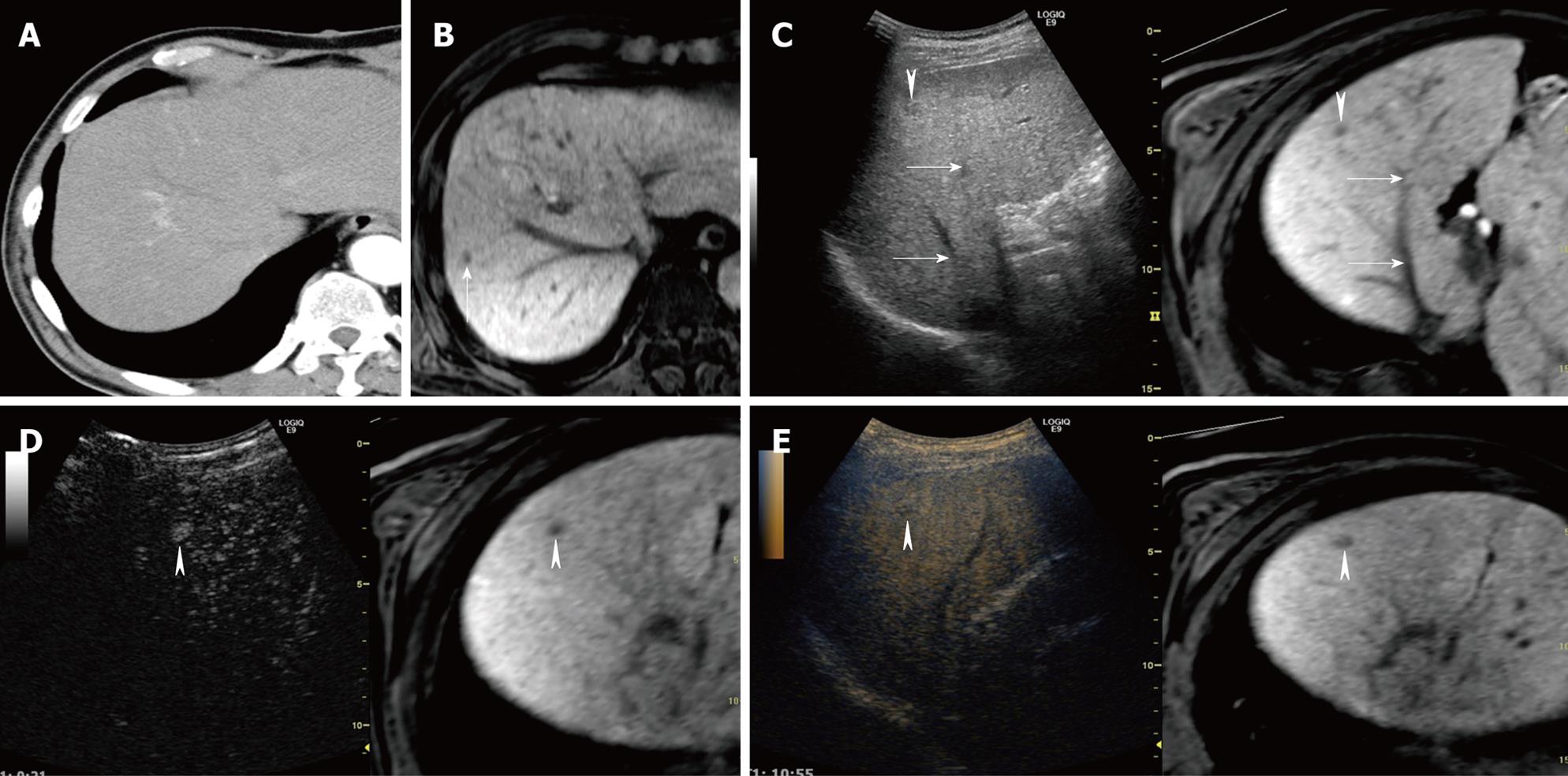Copyright
©2010 Baishideng.
Figure 9 A 58-year-old man with newly developed HCC (maximum diameter 10 mm) in segment VIII.
A: Arterial phase contrast-enhanced CT can not detect a tumor; B:Hepatobiliary phase contrast-enhanced MRI with gadolinium-ethoxybenzyl-diethylenetriamine (Gd-EOB-DTPA) obtained at 20 min after injection shows a hypo-intense area in segment VIII (arrow); C: Fusion image combining hepatobiliary phase contrast-enhanced MRI with Gd-EOB-DTPA (right side) and conventional US (left side). Hepatobiliary phase contrast-enhanced MRI with Gd-EOB-DTPA shows a hypo-intense area in segment VIII. Hepatobiliary phase contrast-enhanced MRI with Gd-EOB-DTPA as the reference standard, allows conventional US to detect the target HCC lesion easily (arrowhead). Arrows indicate the hepatic vein; D: Fusion image combining hepatobiliary phase contrast-enhanced MRI with Gd-EOB-DTPA (right side) and early phase Sonazoid-enhanced US at a low MI (left side). Early phase Sonazoid-enhanced US at a low MI shows a small homogeneous enhancement in segment VIII (arrowhead). This enhanced area corresponds to a hypo-intense area, as shown on hepatobiliary phase contrast-enhanced MRI with a Gd-EOB-DTPA image (arrowhead); E: Fusion image combining hepatobiliary phase contrast-enhanced MRI with Gd-EOB-DTPA (right side) and late phase Sonazoid-enhanced US at a low MI (left side). Late phase Sonazoid-enhanced US at a low MI shows a small perfusion defect in segment VIII (arrowhead). This area corresponds to a hypo-intense area, as shown on hepatobiliary phase contrast-enhanced MRI with Gd-EOB-DTPA image (arrowhead).
- Citation: Numata K, Luo W, Morimoto M, Kondo M, Kunishi Y, Sasaki T, Nozaki A, Tanaka K. Contrast enhanced ultrasound of hepatocellular carcinoma. World J Radiol 2010; 2(2): 68-82
- URL: https://www.wjgnet.com/1949-8470/full/v2/i2/68.htm
- DOI: https://dx.doi.org/10.4329/wjr.v2.i2.68









